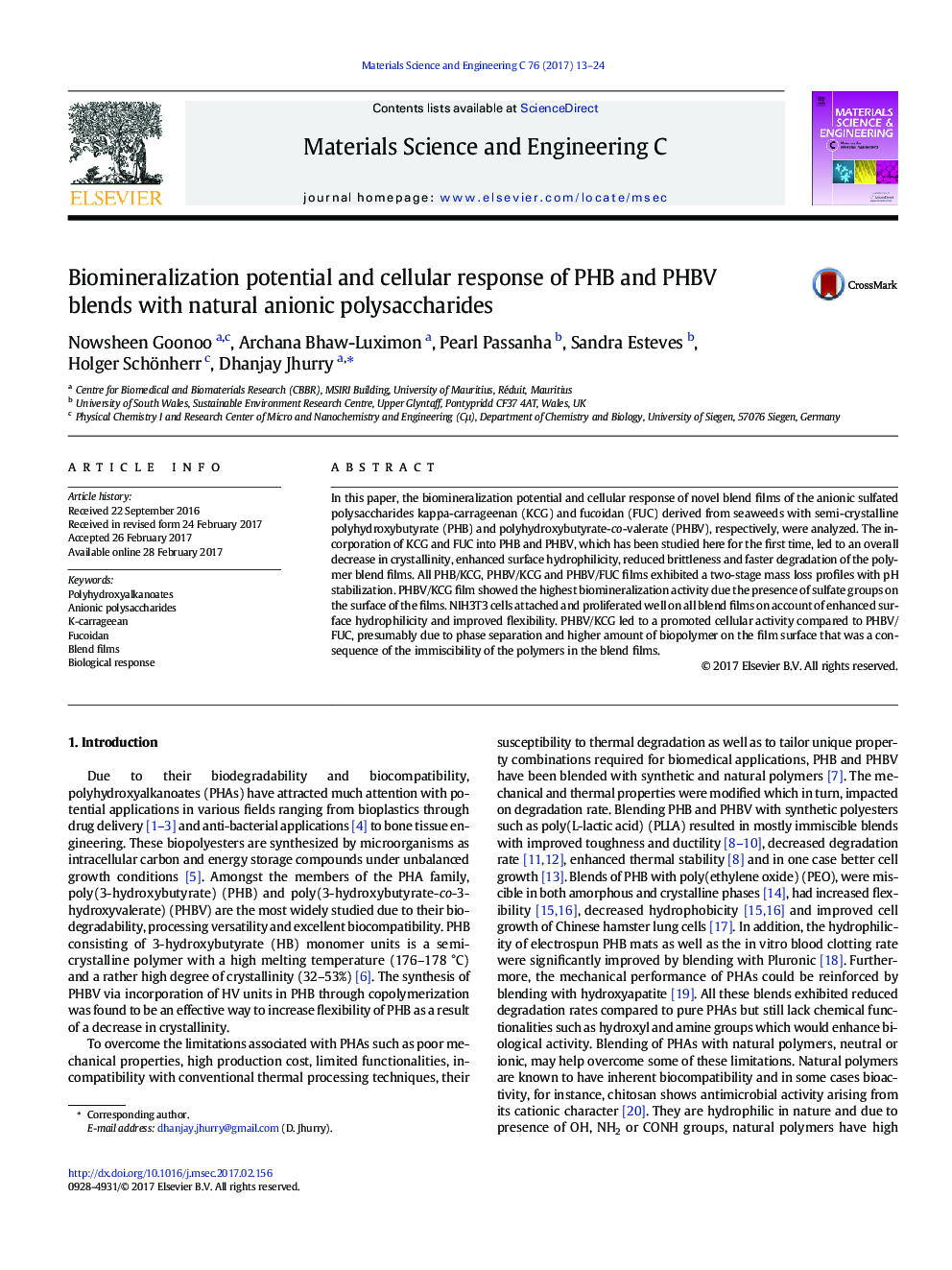| Article ID | Journal | Published Year | Pages | File Type |
|---|---|---|---|---|
| 5435087 | Materials Science and Engineering: C | 2017 | 12 Pages |
â¢Blend of PHB and PHBV with k-carrageenan (KCG) and fucoidan (FUC) were immiscible and partially miscible respectively.â¢Incorporation of KCG and FUC led to enhanced surface hydrophilicity and flexibility.â¢PHBV/KCG films exhibited the highest biomineralization activity.â¢The presence of KCG and FUC led to enhanced cellular responses compared to pure polyester films.
In this paper, the biomineralization potential and cellular response of novel blend films of the anionic sulfated polysaccharides kappa-carrageenan (KCG) and fucoidan (FUC) derived from seaweeds with semi-crystalline polyhydroxybutyrate (PHB) and polyhydroxybutyrate-co-valerate (PHBV), respectively, were analyzed. The incorporation of KCG and FUC into PHB and PHBV, which has been studied here for the first time, led to an overall decrease in crystallinity, enhanced surface hydrophilicity, reduced brittleness and faster degradation of the polymer blend films. All PHB/KCG, PHBV/KCG and PHBV/FUC films exhibited a two-stage mass loss profiles with pH stabilization. PHBV/KCG film showed the highest biomineralization activity due the presence of sulfate groups on the surface of the films. NIH3T3 cells attached and proliferated well on all blend films on account of enhanced surface hydrophilicity and improved flexibility. PHBV/KCG led to a promoted cellular activity compared to PHBV/FUC, presumably due to phase separation and higher amount of biopolymer on the film surface that was a consequence of the immiscibility of the polymers in the blend films.
Graphical abstractDownload high-res image (96KB)Download full-size image
